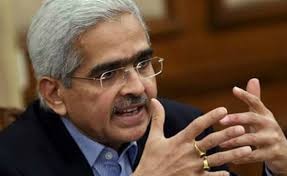At 4.4 per cent, the Reserve Bank of India’s policy rate is now at its historic low. Ditto for the commercial banks’ cash reserve ratio (CRR) or the portion of deposits that they need to keep with the central bank – 3 per cent.
To Reserve of India (RBI) Governor Shaktikanta Das’s credit, he has managed to surprise the market even though he was a bit late in joining the league of global central banks in monetary easing. None expected a CRR cut at this time; 75 basis points (bps) cut in the policy rate at one shot has also been more than what most had expected. One bps is a hundredth of a percentage point.
The slew of measures, taken on Friday at an out-of-turn meeting of the monetary policy committee (MPC), addresses the concerns of the market and financial sector stability while taking the impact of coronavirus (Covid-19) on Asia’s third largest economy head-on.
The forward guidance of the policy is as important as the measures announced. The RBI will do anything and everything, conventional and unconventional, to revive growth while continuing with the accommodative stance as long as it is necessary.
Let’s take a closure look at some of the measures and their implications:
- The policy repo rate has been cut by 75 bps to 4.4 per cent from 5.15 per cent. This reduces the banks’ cost of borrowing from the RBI.
- The reverse repo rate has been cut deeper, by 90 bps, to 4 per cent. The banks park their excess liquidity at the RBI’s reverse repo window. A sharper cut of this rate is a disincentive for the banks to have too much money in their kitty. They would rather use the money to give credit and earn more.
- The CRR has been cut by 100 bps to 3 per cent of banks’ net demand and time liabilities, a loose proxy for deposits. While this cut is for one year, banks’ daily CRR balance maintenance with the RBI has been pared from 90 per cent to 80 per cent for three months. The money that the banks keep with the RBI in the form of CRR does not earn any interest. A cut in CRR will free up Rs 1.37 trillion for the banks which they can deploy for credit and investment purposes.
- The RBI has been doing long term repo auctions or LTRO to infuse liquidity in the system. Taking a step forward, it has decided to conduct auctions of targeted long term repos (TLTRO) for up to Rs1 trillion. The tenure of the money will be up to three years while its cost will be linked to the policy repo rate.
The money raised through this route will be invested in corporate bonds, commercial papers and non-convertible debentures both from primary and second markets, in equal proportions. Mutual funds and non-banking finance companies (NBFCs) will be able to sell such instruments to banks.
Finally, the banks will not have to mark to market (MTM) such investments. MTM is an accounting practice of valuing an investment in accordance with its market price and not the price at which it is bought. This means even if the value of such investments erodes, banks’ balance sheets will not take the hit.
Taking a leaf out of the European Central Bank’s book, both LTRO and TLTRO are unconventional measures. Of course, the European central bank had linked its LTRO to bank lending; the RBI wants the banks to use money raised through this route to buy corporate bonds.
The banks can borrow from the RBI’s repo window if they have government bonds in their portfolio in excess of regulatory requirement as they need to offer such bonds as collateral. They can dip 2 per cent into their bond holdings to borrow under the marginal standing facility (MSF), paying 25 more than the repo rate. Now, they are allowed to dip to 3 per cent of their bond portfolio to raise money through the MSF window with immediate effect. The relaxation will remain till June 30.
The trio of CRR cut, TLTRO window and MSF relaxation can theoretically release Rs 3.74 trillion liquidity into the system. More importantly, banks which require money will get it now. Although there have been close to Rs 3 trillion average excess money in the system daily from the beginning of March, its distribution has been uneven.
The effects of these measures were visible immediately. The yield of government bonds dropped around 30 bps before sell-off pushed up the yield from the day’s low on Friday and the trading volume swelled. Life returned to the almost-frozen corporate bond market with short-term yields rallying as much as 100 bps. Bond prices and yield move in opposite directions.
The latest policy has also taken care of the banks’ balance sheets by offering relaxations on regulations and supervision.
All commercial banks, including small finance banks, co-operative banks as well as NBFCs have been given a three-month moratorium on repayment of term loans. A similar relaxation has been given for working capital loans as well. In other words, if borrowers are not able to repay, the banks will not need to treat such loans as non-performing assets and provide for them. I am sure the repayment holiday will be extended if the situation demands.
The policy reiterated the RBI’s objective of achieving the medium-term target for consumer price index inflation of 4 per cent within a band of +/- 2 per cent, while supporting growth, but has not spelt out the inflation and growth estimates. There is no surprise on that as US Federal Reserve has done exactly so. But the surprise is the 4-2 verdict of the MPC in favour of the 75 bps rate cut. Two MPC members were for a 50 bps rate cut, even at this hour.



